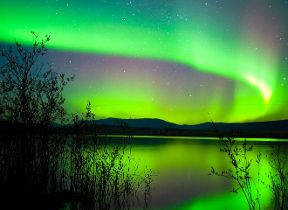Beaver Supermoon to light up UK skies, but will it be visible?
Tonight, skywatchers across the UK will have the opportunity to witness the Beaver Supermoon.
Tonight, skywatchers across the UK will have the opportunity to witness the Beaver Supermoon, the second of three supermoons this year.
Rising at 3:55pm this evening, this celestial event promises to be the brightest and largest full moon of 2025. However, as is often the case with British weather, conditions will play a crucial role in determining how visible the supermoon will be across the country.
What is the Beaver Supermoon?
A supermoon occurs when a full moon coincides with the point in its orbit closest to Earth, known as perigee. The moon’s orbit is not a perfect circle but rather elliptical, meaning its distance from Earth varies throughout the month.
At perigee, the moon is about 220,000 miles away, while at its furthest point, apogee, it is around 250,000 miles away. When the full moon falls within 90% of its closest approach, it is termed a supermoon. These moons can appear up to 14% larger and 30% brighter than typical full moons, making them a striking sight for observers.
Tonight’s weather forecast
The forecast for tonight’s Beaver Supermoon is mixed, with much of the country expected to experience mostly cloudy conditions. Rain and drizzle are likely at times in the north and west, while other regions will remain mainly dry but with variable and, at times, extensive cloud cover.
There's a lot of cloudy skies out there today but have you been lucky enough to see any brighter spells? ⛅
— Met Office (@metoffice) November 5, 2025
Take a look at the latest satellite loop below 🛰️ pic.twitter.com/wLyYwKgVOB
Mist and fog patches may also develop, particularly in low-lying areas. Temperatures will be very mild for the time of year, and winds are expected to ease as the evening progresses.
Best places and times to view the supermoon
Despite the widespread cloud cover, there will be brief windows of opportunity for keen observers. Around 5pm, skies above Leeds, Manchester, and York are forecast to clear sufficiently to offer a good view of the supermoon. Later in the evening, at approximately 11pm, a corridor of cloud is expected to clear from Northwich to Swindon, extending down through Hereford, Worcester, Bristol, and Salisbury, reaching as far south as Bournemouth.
Those willing to stay up late may be rewarded with a glimpse of the supermoon as it shines through these clearer skies.
For those in other parts of the country, patience and a bit of luck may be required. With variable cloud cover, brief breaks may occur, offering fleeting views of the moon. It is advisable to check local forecasts and keep an eye on the sky throughout the evening.
Why do supermoons happen?
The phenomenon of the supermoon is a result of the moon’s elliptical orbit around Earth. As the moon travels along its path, its distance from Earth changes, leading to variations in its apparent size and brightness.
When a full moon coincides with perigee, the result is a supermoon, an event that captures the imagination of astronomers and casual observers alike. The increased size and brightness are not only visually impressive but also provide an excellent opportunity for photography and moon gazing.
Why “Beaver Moon”?
According to the BBC, the name “Beaver Moon” has historical roots, believed to originate from Native American tribes and early European settlers. This time of year marks when beavers become particularly active, building dams and preparing for the winter months.
In the UK, beavers were hunted to extinction in the 16th century, primarily for their fur. However, recent rewilding projects have seen beavers reintroduced to parts of England and Scotland, where they are now recognised for their positive impact on river ecosystems and biodiversity.
READ MORE: Space weather: How different types affect us
While tonight’s Beaver Supermoon is set to be the brightest and largest full moon of the year, those who miss it will not have to wait long for another opportunity. The third and final supermoon of 2025 will occur on December 4, offering another chance to witness this remarkable astronomical event.
Although cloud cover may obscure views for many, those fortunate enough to catch a glimpse will be treated to a spectacular sight.
Keep up to date with weather warnings, and you can find the latest forecast on our website, on YouTube, by following us on X and Facebook, as well as on our mobile app which is available for iPhone from the App store and for Android from the Google Play store.






